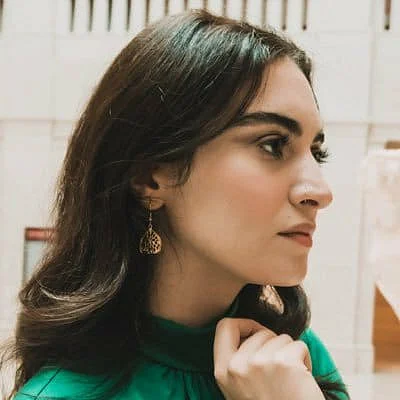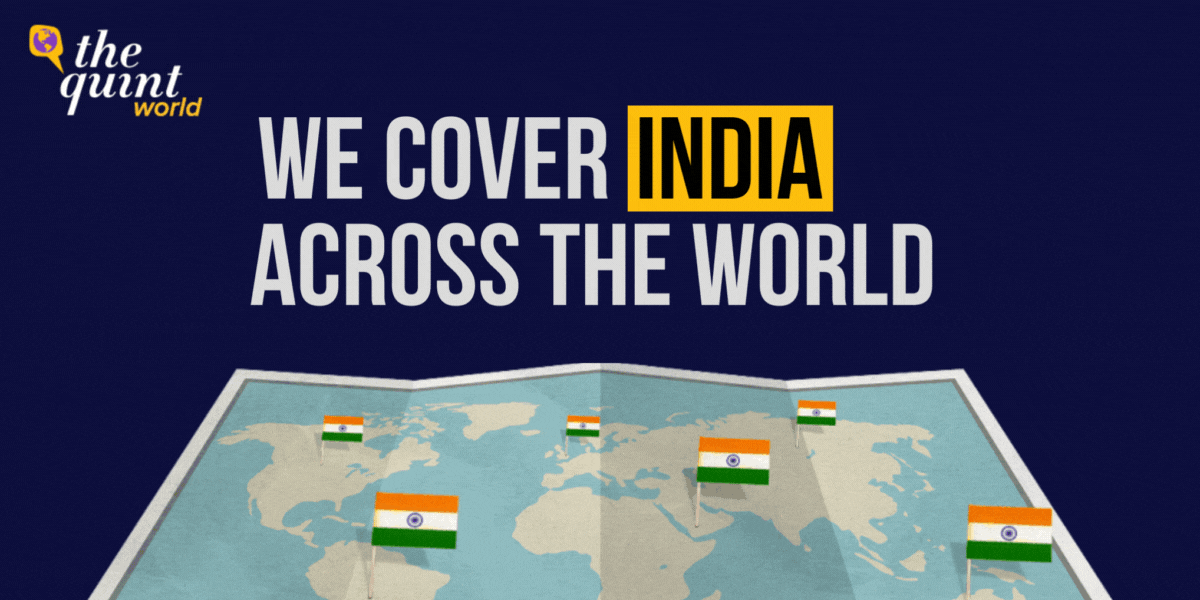The recently concluded Olympics offered a glimpse into the sheer brilliance of athletes across the world, and Muslim athletes like others at the Tokyo games represented strength, spirit, and triumph.
Netherland’s Safin Hassan ran 5000m to her gold. Tunisia’s Ahmed Hafnaoui freestyled 400m for gold, pulling off Olympic swimming’s biggest surprise at Tokyo. USA’s 400m hurdles specialist Dailah Mohammad earned a gold for the team. Qatar’s Mutaz-Essa Barshim gave us the most heart-warming moment of the games – he persuaded a referee to let him share the high jump gold medal with his rival and friend, Italy's Gianmarco Tamberi – the athletes clasping hands, whooping with ecstasy, both having won gold.
Moments of athletic excellence on the highest stage by these Olympians eclipsed the prevailing stereotypes of the Muslim community, albeit for a fleeting moment.
Wajahat Ali, a prominent American writer, author and public speaker strives to bring attention to the persisting good Muslim-bad Muslim dichotomy in US. “When I talk about American Muslims, people are surprised to hear about Mohammed Ali. They say, 'Oh yeah, he is one of the good ones. We thought you were referring to ones like Osama'. America says you belong to us, to these athletes. We elevate them. Mohammed Ali was outspoken, charismatic, but we forget that he was vilified for converting to Islam. The athletes represent an idealistic image of a good Muslim, until they get out of that lane and use that platform to speak out for a cause,” he says.
Unable to Break Stereotypes
Draped in an Oromo flag, Sifan Hassan’s words after winning a gold in Tokyo – Alhamdulillahi Rabbil Alamin – made a statement, as did the picture of Britain’s Mo Farah who bowed his head in a familiar Muslim fashion to pray, after successfully defending his 10k meters gold medal at Rio Olympics.
These role models of endurance, courage, and friendship are never able to power past prejudices to become narratives in the entertainment industry, where the dominant image of a Muslim remains a male, Arab terrorist.
"Islam has been racialised in films to be Middle East Arabs only, which is not where the vast majority of Muslims live,” says Arij Mikati, a Lebanese American who challenges damaging narratives about Muslims in US. She continues, "Arab Muslims are demonised through story lines. It is very prevalent in TV shows like Homeland, and many popular shows using national security driven stories. Even run-of-the-mill shows as NCIS, or blockbuster films like Munich, and Argo which won the best picture. Muslims are villainous two-dimensional characters, and there are no nuanced, 3-D Muslim characters.”

Muslims Seen As Suspects Post 9/11
Wajahat Ali’s ‘witty and moving’ memoir about growing up a brown Muslim in USA, Go back to Where You Came from, is set to be released in 2022. Sometimes he jokingly refers to himself as a pre-partition Indian American (his grandparents moved to Karachi from Hyderabad, India), to draw attention to how difficult it becomes at times to be a Pakistani American, thanks to the ‘western media perpetrated brown, bearded, angry, fundamentalist’ image of Muslims.
He recalls how 9/11 changed attitudes, "Even if you were a good desi, after 9/11, it didn’t matter – you were them. I was in the Muslim Students Association at UCB. I saw how immediately an entire community got targeted, all the way in California. None of the 19 foreign hijackers were Pakistani. I was getting hate mail asking – why did you do this? We all got lumped together, there was no nuance in the hate, you just had to look Muslim-y.”
That is what propelled Ali to turn to activism.


Arij Mikati
(Photo Courtesy: Twitter/Arij Mikati)
Similarly, Arij Mikati’s experiences inspired her to become an advocate for a more realistic Muslim representation in media. “I was 12 when 9/11 happened. It magnified Islamophobia. It pretty explicitly added to the demonising representation of Muslims in films, in everything around me. I felt as a child I had to constantly play defence – ‘What you saw in that film is not like my family’, ‘Please don’t believe what you saw on TV’, instead of dreaming and learning and being a child,” shares Mikati, Managing Director of Culture Change at Pillars Fund, an organisation that amplifies voices of Muslims in US.

Need for More Inclusive Media
Pillars fund has created a blueprint for film makers to help create inclusive Muslim characters, which received, what has been touted to be "tremendous response from studios and filmmakers". The guidelines originated from the ‘Missing and Maligned’ study conducted along with USC Annenberg Inclusion Initiative, Ford Foundation, and the British actor Riz Ahmed’s Left Handed Films.
Despite constituting 24 percent of the world population, the reality across 200 popular global movies in US, UK, Australia and NZ, between 2017-2019, revealed that Muslims comprised only 1.6 percent of speaking characters. 90.5 percent of films did not feature even one speaking Muslim character. Portrayals are rooted in violence – 53.7 percent of the 41 primary or secondary Muslim characters were victims of violence, and 39 percent were perpetrators. 58.5 percent were refugees or immigrants. 87.8 percent spoke no English or spoke with an accent. Only 23.6 percent of the Muslim characters were female. Only 7 Muslim characters were children. The racial profiling – 66.7 percent of 144 Muslim characters were Middle Eastern/North African.


Muslims are either completely removed from stories or portrayed through a white lens, which in turn impacted not only on policies, but also on young minds, says Wajahat Ali.
"One of the great beloved exports of America is pop culture. They are savages is the default narrative of Islam, of someone to be hated, not only in films, but across media. I grew up in the 80s inhaling this pop narrative. We laughed as it looked ridiculous. I laughed at our guys getting beaten up. We never see a desi hero, nor see us get witty lines, or see our guy get the girl. We were called either Apu or terrorists. There is a detrimental impact on impressionable young minds of – we hate your culture and your food. The ideal is always blue eyes, thin nose, and white skin – young boys aspire for that to fit in," he adds.


Wajahat Ali
(Photo Courtesy: Twitter/Wahajat Ali)
Such a narrow portrait of a diverse community – not showing them as neighbours, friends, professionals – disallows audiences to see modern day experiences of Muslims.
Muslims in Indian Cinema
Moreover, a majority of Muslims live outside the Arab world, in South East Asia and South Asia. There are more than 200 million Indian Muslims, and among them are many cinema consumers. Which brings us to what was a general consensus in the Hindi film industry, till very recently – if Muslims do not like a film, it flops. Major Hindi film releases are held back during Ramzan.
With a change in global politics, Muslim characters in Hindi films have also changed from Muslim rulers’ sense of justice in Mughal-e-Azam and Nehruvian national integration themes of Amar Akbar Anthony to Shah Rukh Khan’s My Name is Khan, to more recent ones about devilish Muslim invaders. Within that journey, stereotyping Muslims has always existed in Hindi films – Nawabi free-flowing poetry and nautch girls have kept the stories of everyday Muslims absent. This is in spite of the fact that Hindi films have had not only large Muslim audiences, but also story writers, directors and producers.
Get Rid of The 'White Gaze'
Across the border, a Pakistani Canadian film maker Anam Abbas believes that documentaries allow more realistic portrayals from all walks of life. “Documentary is on the forefront of the kind of work we are hoping to see – more direct stories,” he says.
Founding member of ‘Documentaries Association of Pakistan’, Karachi-based producer of Showgirls of Pakistan, Anam is interested in platforms to amplify women’s and Pakistani transgressive voices.
Calling the Pillars Fund’s blueprint for Muslim inclusion a great initiative, Anam stresses that the films being made in South Asia have to steer away from falling into the ‘white gaze’ trap of seeking Western audiences. Anam adds that along with empowering writers, “Juries also have to include Muslims, and not have non-Muslims decide which Muslim stories matter. There have to be more brown people in decision making roles in the film festival and production circuits. The people who train you to pitch a film, people with the wallets, they need training. They should take responsibility to not have narrow minds.”
Media and films reinforce stereotypes and shape our gaze, creating a sense of ‘we’ and ‘them’, which have real world consequences. Most Muslims, including prominent actors such as Shahrukh Khan and Riz Ahmed (whose company supports the Pillars Fund initiative), have suffered intense scrutiny at Western airport security checks since 9/11.
As my acting career developed, I was no longer cast as a radical Muslim – except at the airport.Riz Ahmed, in the Guardian
With the Taliban takeover of Afghan cities, international security and Islamic terrorism are back to being often used phrases.

The interest being shown by mainstream film studios for the Blueprint for Muslim Inclusion, the success of Pillars Artist fellowship, a large group of philanthropists including Mackenzie Scott’s USD 6 million donation to Pillars Fund, are a testimony to a keenness to create more nuanced and real world Muslim portrayals. Hopefully, the films to come might even have stories with Muslim Olympians.
(At The Quint, we are answerable only to our audience. Play an active role in shaping our journalism by becoming a member. Because the truth is worth it.)

